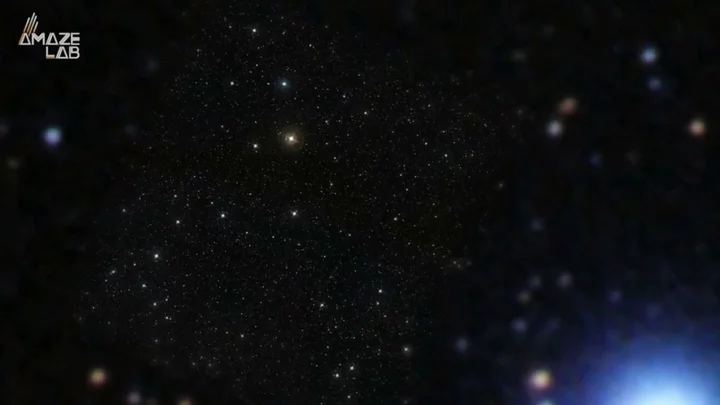
These Fringe Social Media Sites Want Your Money
Alternative, personality-driven social media sites have gained popularity in recent years, and a new study
2023-06-02 20:49

The Best of Computex 2023
To be sure, at Computex 2023 in Taipei, Taiwan, the AI wave was inescapable, with
2023-06-02 20:46

Precision Cancer Consortium Teams Up with Massive Bio to Utilize AI Analytics and Enhance Clinical Trial Matching for Cancer Patients Worldwide
NEW YORK--(BUSINESS WIRE)--Jun 2, 2023--
2023-06-02 20:27

Trend Management Launches New Location in Nashville
NASHVILLE, Tenn.--(BUSINESS WIRE)--Jun 2, 2023--
2023-06-02 20:19

Paige Spiranac sparks Twitter debate over bandwagon fans: 'I’m no angel'
Here's what Paige has to say about Bandwagon fans
2023-06-02 19:56

Netflix, Disney, Amazon to challenge India's tobacco rules for streaming-sources
By Aditya Kalra and Munsif Vengattil NEW DELHI Streaming giants Netflix, Amazon and Disney on Friday privately discussed
2023-06-02 19:48

Scientists baffled by discovery of '2000-year-old computer'
Scientists have been left baffled by the discovery of the wreck of a 2,000-year-old “computer” that is amazingly complex. The Antikythera mechanism – an astronomical calendar – has been dubbed “‘the first computer” and has baffled scientists for generations after it was first discovered inside a Greek shipwreck in 1901. The device is a hand-powered time-keeping instrument that used a wing-up system to track the sun, moon and planets’ celestial time. It also worked as a calendar, tracking the phases of the Moon and the timing of eclipses. Despite sounding relatively simple, the mechanism was actually ahead of its time, being more technically sophisticated than any other tool that was invented over the next 1,000 years. In its current condition, the mechanism is in 82 separate fragments with only a third of its original structure remaining, including 30 corroded bronze gearwheels. Sign up to our free Indy100 weekly newsletter Research into the device from experts at University College London involved 3D computer modelling and helped them solve the mystery of how the device worked, revealing a “creation of genius”. Adam Wojcik, a materials scientist at UCL said at the time: “We believe that our reconstruction fits all the evidence that scientists have gleaned from the extant remains to date.” They theorised that the device tracked the movement of the sun, moon and planets on concentric rings, as the ancient Greeks believed that the sun and planets revolved around Earth, rather than the sun. The researchers explained in Scientific Reports: “Solving this complex 3D puzzle reveals a creation of genius—combining cycles from Babylonian astronomy, mathematics from Plato’s Academy and ancient Greek astronomical theories.” Have your say in our news democracy. Click the upvote icon at the top of the page to help raise this article through the indy100 rankings.
2023-06-02 19:26

Kai Cenat reacts to BruceDropEmOff joining Kick after multiple Twitch bans: 'Fire announcement'
Kai Cenat is amazed after BruceDropEmOff's announcement, keep reading to know more
2023-06-02 19:21

Scientists discover that the universe is evaporating right in front of our eyes
Every now and then a story comes along which completely changes the way you think about space. For instance, did you know the universe is essentially evaporating right before our eyes? A new study has been released which focuses on the effect that radiation emitted from objects in the solar system can have a massive impact on quantum fields surrounding them. It follows on from Stephen Hawking’s theory that black holes lose mass and evaporate over time as an unusual form of radiation takes effect. Now, astrophysicists Michael Wondrak, Walter van Suijlekom, and Heino Falcke of Radboud University in the Netherlands have stated that this unusual form of radiation is apparent in other objects as well as black holes. Sign up to our free Indy100 weekly newsletter In fact, they believe that “Hawking radiation” could be found in objects apparent everywhere in the universe – and it could mean that the universe is slowly evaporating before our very eyes. "We demonstrate that," Wondrak says in the study published in Physical Review Letters. "In addition to the well-known Hawking radiation, there is also a new form of radiation." "We show that far beyond a black hole the curvature of space-time plays a big role in creating radiation," van Suijlekom explains. "The particles are already separated there by the tidal forces of the gravitational field." Essentially, huge objects in the solar system can cause space-time to bend around them. When that happens, it causes enough change in quantum fields to generate particles which have similar properties to Hawking radiation. Falcke said: "That means that objects without an event horizon, such as the remnants of dead stars and other large objects in the universe, also have this sort of radiation. "And, after a very long period, that would lead to everything in the universe eventually evaporating, just like black holes. This changes not only our understanding of Hawking radiation but also our view of the universe and its future." Have your say in our news democracy. Click the upvote icon at the top of the page to help raise this article through the indy100 rankings.
2023-06-02 19:19

Elon Musk says his Shanghai factory makes the 'highest quality' Teslas
Tesla CEO Elon Musk has wrapped up his first trip to China in three years, after meeting a string of government officials and thanking workers at the company's mega factory in Shanghai.
2023-06-02 18:55

Will xQc accept Adin Ross's offer to join Kick? 'Twitch don’t treat you right bro'
Adin Ross looks at nostalgic photos with xQc and tries to rekindle bond with him
2023-06-02 18:47

Scientists make 'shocking' discovery that life could be hiding on Saturn's moon
Dramatic explosions on the surface of one of Saturn's moons have been observed, and it could change the way scientists approach the search for life in the universe. Saturn's ice-covered moon Enceladus has been the subject of attention from astronomers for decades after plumes of water vapor were observed erupting from its surface 20 years ago by the Cassini spacecraft. Now, the biggest plume yet has been spotted by the James Webb Space Telescope and it measures a massive 10,000 kilometers in length. Incredibly, the plume emitting from the geyser on the surface measures 20 times the size of the moon itself, and it indicates that there’s more to Enceladus than previously thought. Sign up to our free Indy100 weekly newsletter Planetary scientist Geronimo Villanueva of NASA's Goddard Space Flight Center said: "When I was looking at the data, at first, I was thinking I had to be wrong, it was just so shocking to map a plume more than 20 times the diameter of the moon. "The plume extends far beyond what we could have imagined." Instead of solid ice, the size of the plume shows us that there’s a liquid ocean under the surface. It’s kept warm enough to avoid freezing due to the movement that results from the gravitational pull of Saturn. As ever, the existence of liquid water suggests that there’s the possibility of life existing there, and it's encouraging news for authors of the study accepted in Nature Astronomy. "The orbit of Enceladus around Saturn is relatively quick, just 33 hours. As it whips around Saturn, the moon and its jets are basically spitting off water, leaving a halo, almost like a donut, in its wake," Villanueva said. "In the Webb observations, not only was the plume huge, but there was just water absolutely everywhere." It remains one of the most interesting bodies being studied in the solar system, as geochemist Christopher Glein of the Southwest Research Institute. “Enceladus is one of the most dynamic objects in the Solar System and is a prime target in humanity's search for life beyond Earth," geochemist Christopher Glein of the Southwest Research Institute said. "In the years since NASA's Cassini spacecraft first looked at Enceladus, we never cease to be amazed by what we find is happening on this extraordinary moon." Have your say in our news democracy. Click the upvote icon at the top of the page to help raise this article through the indy100 rankings.
2023-06-02 18:26
